The Reserve Bank of New Zealand’s Box File Transfer Service (Box FTS) is a product which enables external organisations to share sensitive information with the Reserve Bank.
Due to reliability issues, the decision was made to rebuild Box FTS and deliver a new service that’s fit for purpose, intuitive and enables the smoother transfer of files between the bank and external organisations.
The challenge I faced was to reimagine the user experience and streamline key tasks while maintaining high degrees of control and security required for financial data exchange.
I led the end-to-end design of the new Box Configuration Management (BCM) application. I was responsible for:
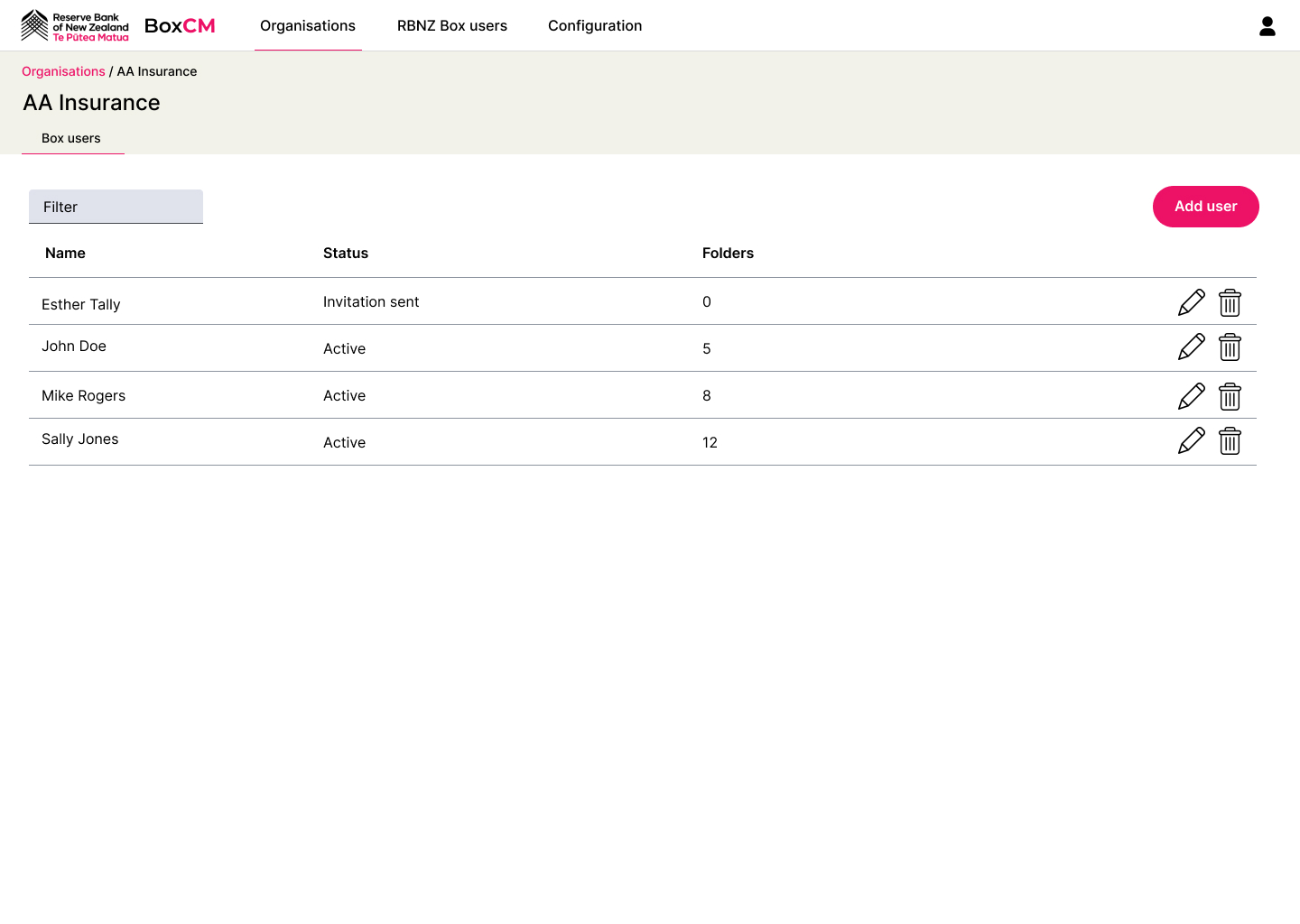
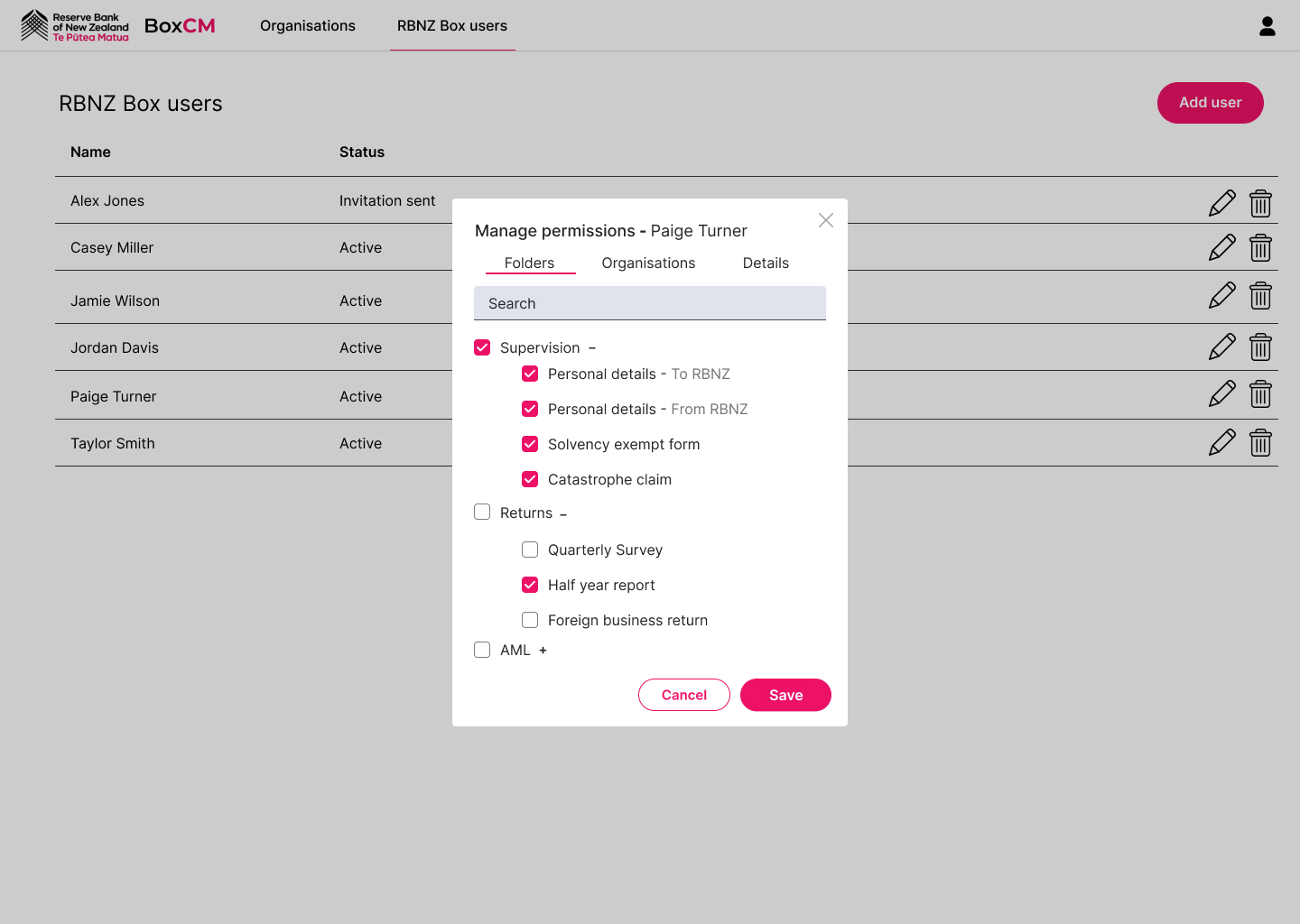
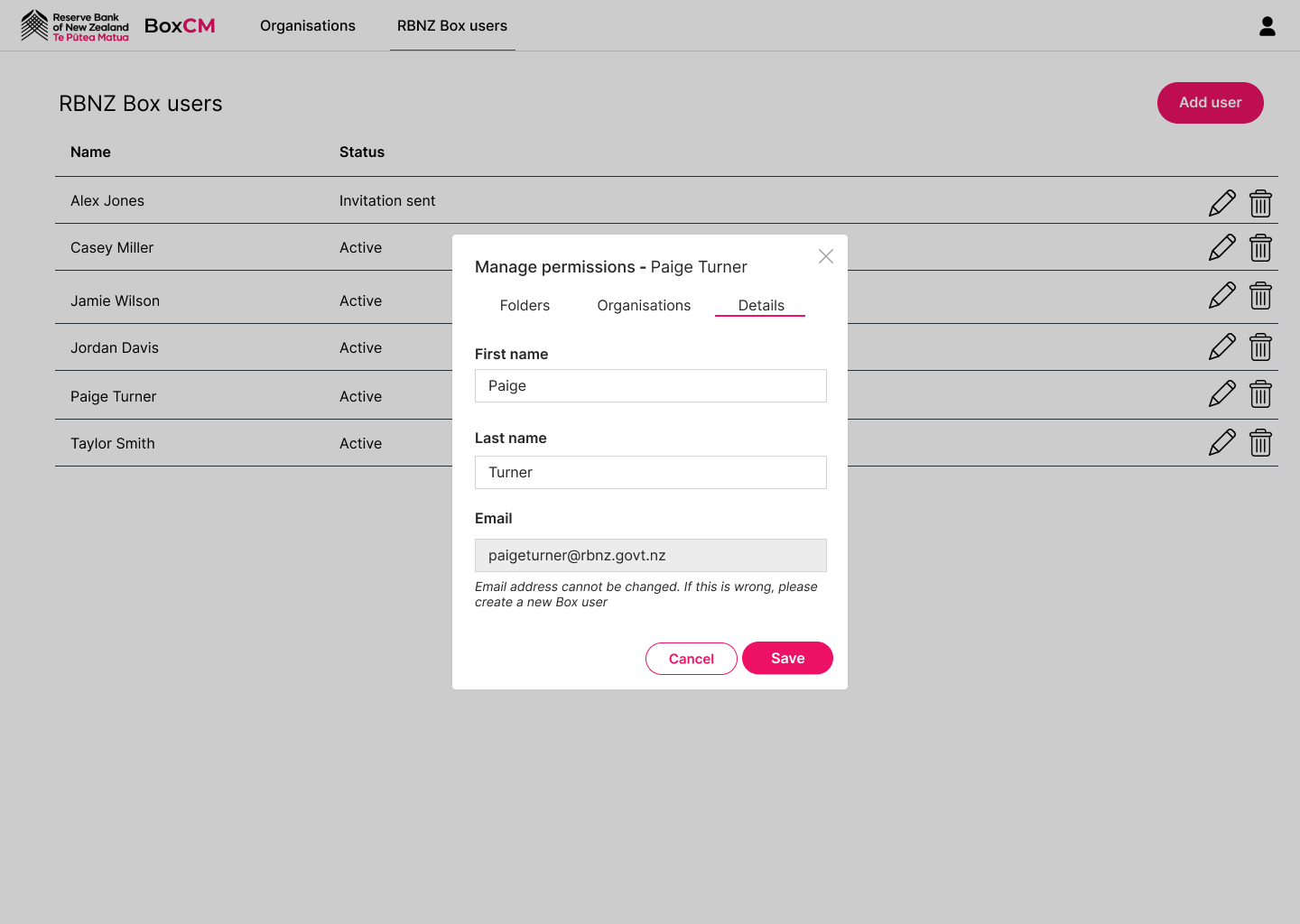
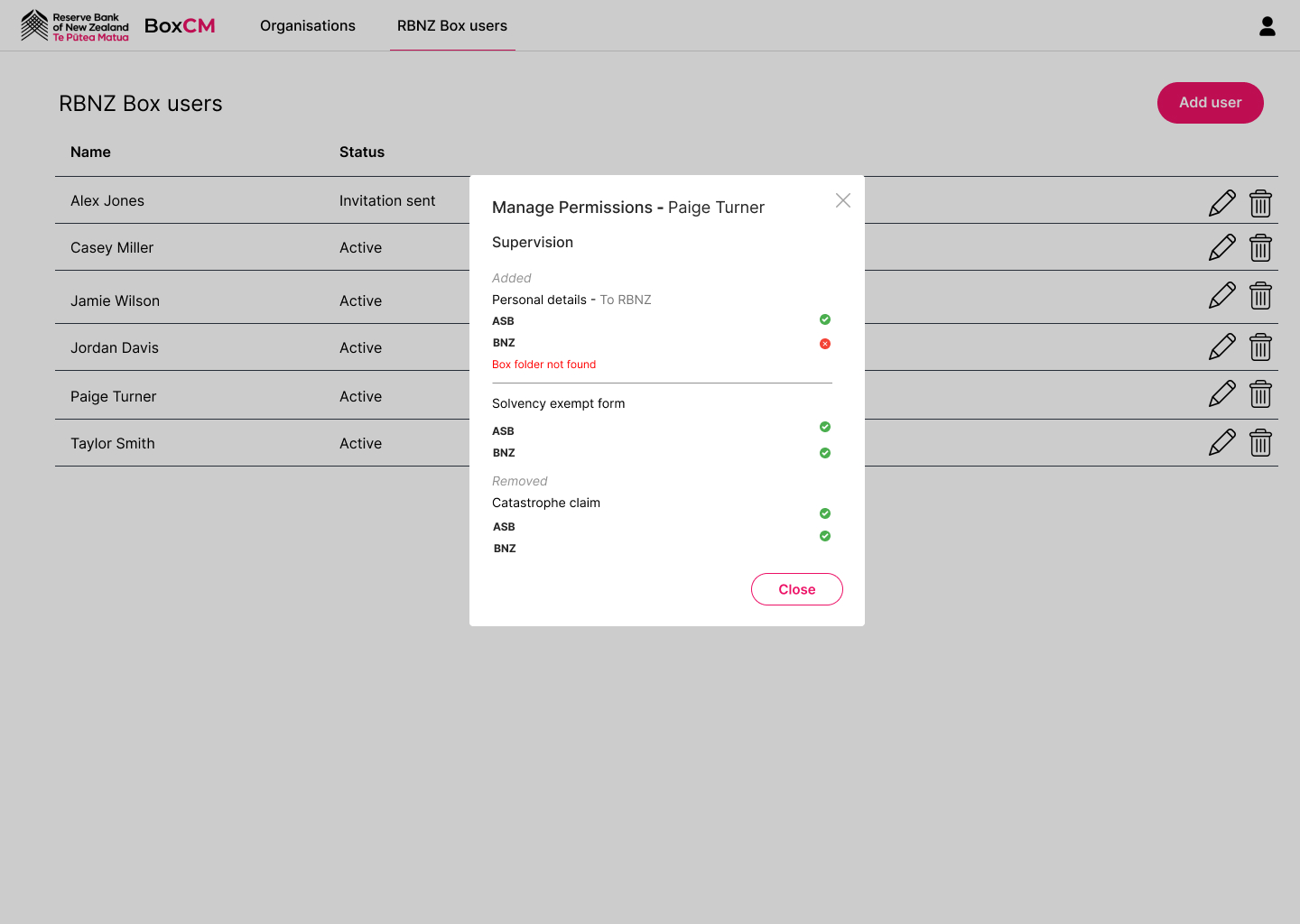
I began by reviewing past artefacts and then ran a series of internal interviews with stakeholders to understand how they care currently using the tool and what challenges they were facing. Key internal pain points included:
Working alongside another designer, we conducted interviews with external users to better understand their experience with the Box FTS platform. Our focus was on learning how they currently use the platform within their internal operations and workflows. Key external pain points included:
After completing stakeholder interviews, I synthesised the findings using affinity mapping to surface key themes such as onboarding challenges, permission management issues, and support inefficiencies. This process helped the team build a clear understanding of the current state experience from the end user's perspective.
To ensure confidence in the findings, I validated the insights with subject matter experts. Their feedback confirmed the patterns and revealed areas with the greatest potential for impact.
These validated insights directly informed future design decisions and helped the team prioritise where to focus time and resources for maximum value.

I led the end-to-end interface design for the Box Configuration Management (BCM) application, with a focus on usability and consistency. The interface was designed to support low-frequency users, provide maximum control and utalise the Angular Material design system. Key contributions included:
This work provided everything the development team needed to effectivly build out the interface of BCM.
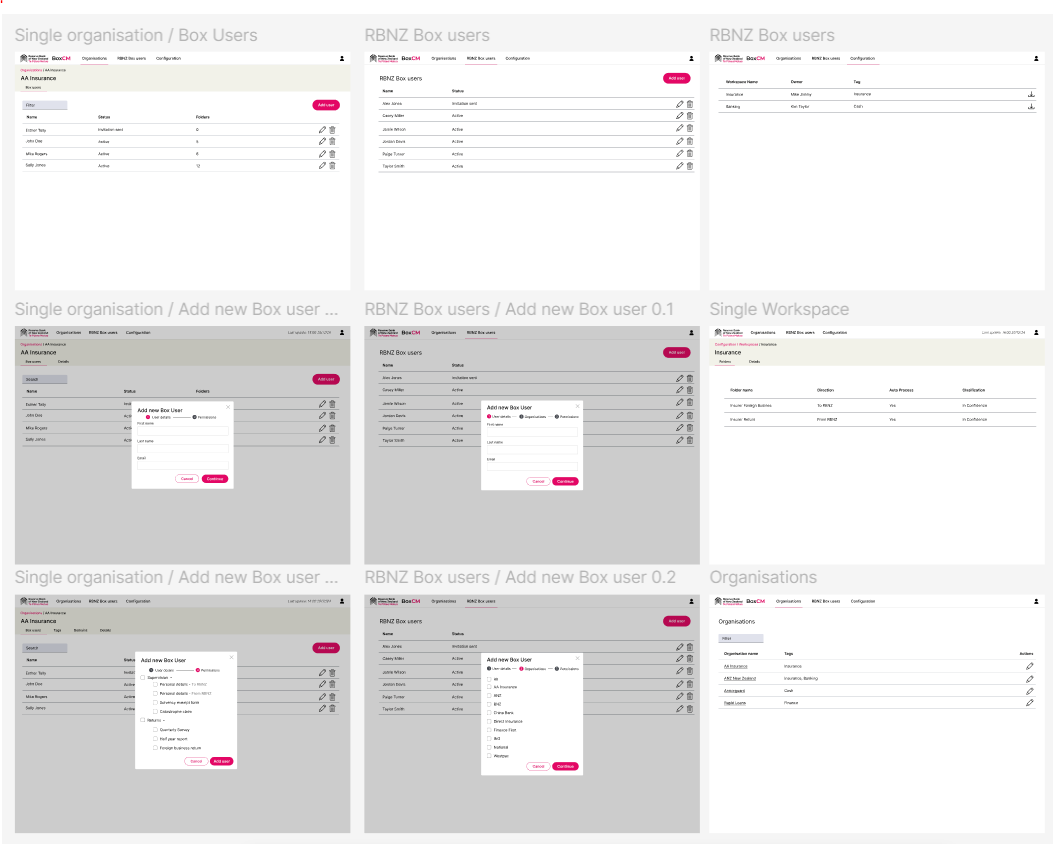
I led multiple rounds of usability testing to evaluate how intuitive the interface was, focusing on task completion, navigation flow, and the clarity of language used throughout the experience.
Testing revealed strong task success rates, confirming the overall usability of the platform. However, it also surfaced opportunities to improve terminology and reduce ambiguity in areas. I incorporated this feedback by refining the language and labels to better match users’ mental models.
These iterative improvements enhanced the overall usability of the application and increased user confidence in completing tasks independently.
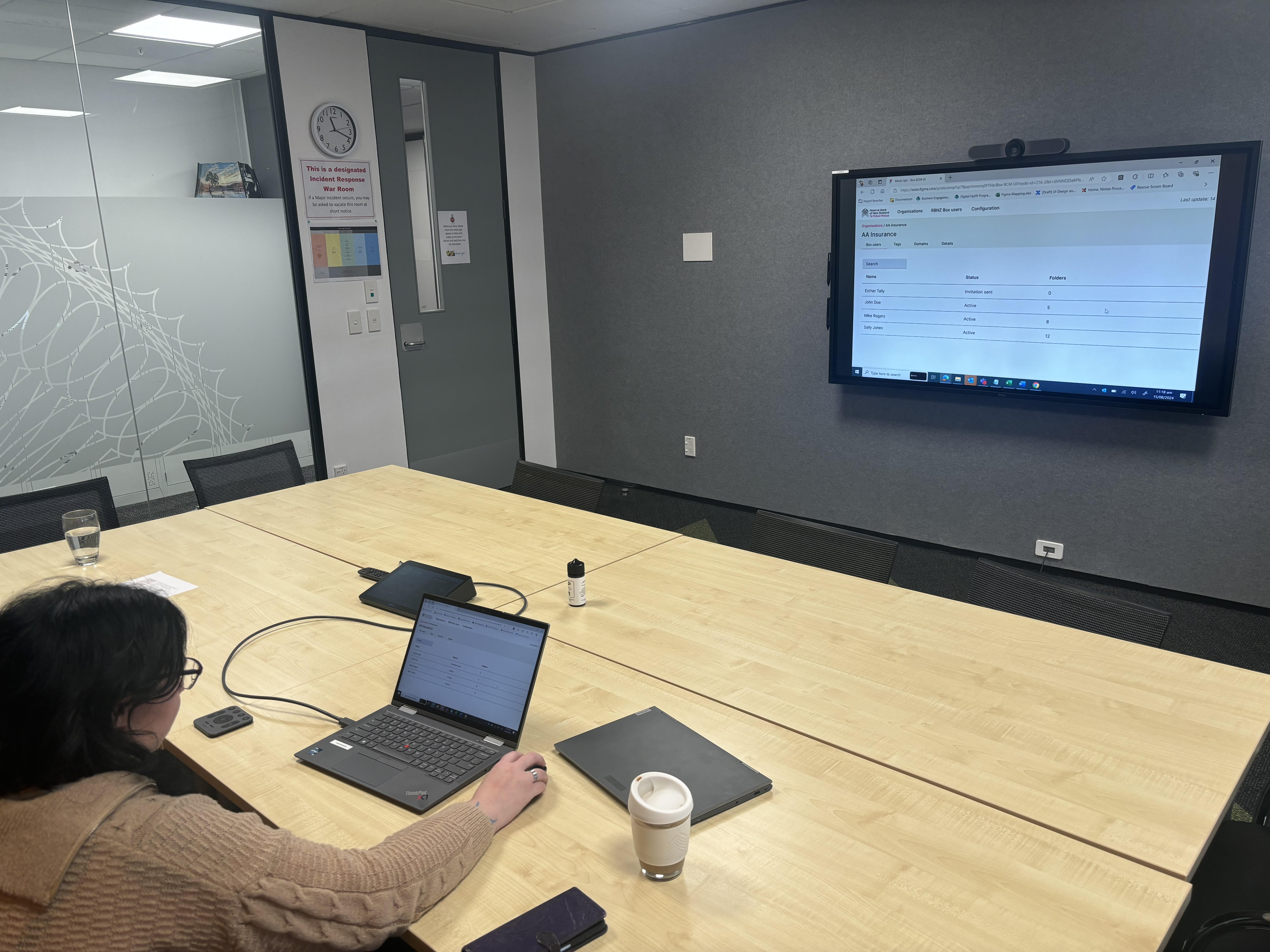
This project demonstrated the power of lean, iterative design in a complex context. Working within an agile team, I delivered tested and well-documented designs on time, enabling developers to move forward with clarity and confidence. The solutions were tailored to real user needs, reducing reliance on the service desk and making it easier for users to complete their tasks independently.
Beyond delivery, the deep insights gathered from both internal and external users influenced the direction of the product itself. By combining research, co-design and rapid prototyping, this work proved that even in regulated, security-sensitive settings, designs that are user friendly and meet the needs of end users can still be delivered.
Email: steven.jasionowicz@gmail.com
Mobile: +64 27 411 9051